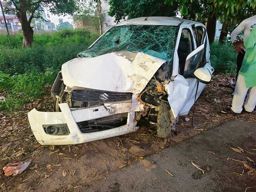As the death toll mounts by the hour, there is no let-up in the fear in Nepal and across the border in India. The last big earthquake in the Himalayan region in 1934, it is said, transported Kathmandu southward by 10 feet and left 10,000 dead. Saturday's 7.9 Richter scale quake was the strongest since then, but it was not the big one scientists had predicted. They contend that this area, where the Indian and Eurasian tectonic plates meet, still has a huge accumulated strain. The very thought is frightening. Like in Gujarat’s Bhuj in 2001, when the civil administration collapsed post the 7.7-scale quake, the Indian defence forces will have a major role to play in Nepal’s rescue and rehabilitation efforts. Operation Maitri is a vital lifeline for the neighbouring country and New Delhi has creditably acted swiftly. The National Disaster Response Force's ability to deliver is on test again.
Buildings kill people, not quakes, and Nepal like India is no Japan, which has stringent construction codes on how much a building may sway. Extra steel bracing, giant rubber pads at the very bottom of the building, hydraulic shock absorbers, retrofitting vulnerable structures, earthquake drills, early warning - the country leads in preparedness. It has managed to limit damage umpteen times, though everything comes undone before a magnitude-9 quake and a tsunami that left 19,000 dead in 2011.
It’s an inescapable fact that the earth will shake, structures will suffer damage, lives will be lost - how much and how many depends on the precautions and response. It's also a fact that quake preparedness and relief mechanism continue to be taken very casually despite the concern shown after every such disaster. The seismic building codes are non-existent, human settlement in high quake-prone zones is unchecked, public awareness on vulnerability is given zero priority and running out if you can is the only drill known, that too self-taught. How long can the government resist from investing in early warning systems, quake-resistant technology, compulsory drills in schools and offices, large-scale specialised training for disaster relief? It is too serious an issue to ignore.



























